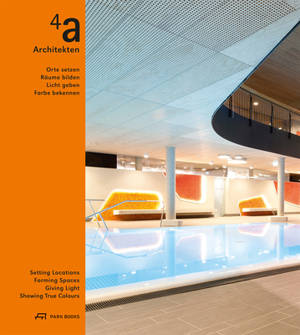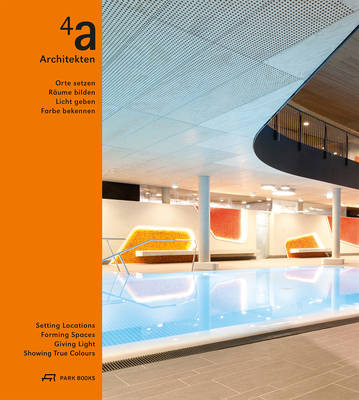
- Afhalen na 1 uur in een winkel met voorraad
- Gratis thuislevering in België vanaf € 30
- Ruim aanbod met 7 miljoen producten
- Afhalen na 1 uur in een winkel met voorraad
- Gratis thuislevering in België vanaf € 30
- Ruim aanbod met 7 miljoen producten
Zoeken
4a Architekten
Setting Locations, Forming Spaces, Giving Light, Showing True Colors
Wolfgang Bachmann
Hardcover | Engels
€ 74,45
+ 148 punten
Omschrijving
In this first book to collect the achievements of 4a Architekten, Wolfgang Bachmann presents a selection of seventeen projects that exemplify the firm's work along with more than three hundred plans and photographs of both proposed and realized projects and a comprehensive catalog of their works. As the architects of some of the most exceptionally beautiful and well-planned public swimming pools and spas--like the Thermal Baths in Bad Ems and the Spa Therme Wien--4a Architekten are widely considered to be among the most creative and innovative in the world. But the firm, consisting of Matthias Burkart, Alexander von Salmuth, Ernst Ulrich Tillmanns, and Eberhard Pritzer (until 2001), has also overseen the development of houses and hotels, as well as sports facilities, cultural centers, and educational institutions throughout Germany, Austria and, most recently, Russia. Bachmann has carefully selected projects to convey the full range of 4a Architekten's work from its founding in 1990 to the present, offering a fascinating look at the firm's approach to a set of design challenges, from locations steeped in culture and history to the need for plans to suit specific functional use. The book also includes two essays that explore the firm's history and practice, as well as three shorter literary texts.
Specificaties
Betrokkenen
- Auteur(s):
- Uitgeverij:
Inhoud
- Aantal bladzijden:
- 272
- Taal:
- Engels
Eigenschappen
- Productcode (EAN):
- 9783906027937
- Verschijningsdatum:
- 15/02/2016
- Uitvoering:
- Hardcover
- Formaat:
- Genaaid
- Afmetingen:
- 257 mm x 290 mm
- Gewicht:
- 1927 g

Alleen bij Standaard Boekhandel
+ 148 punten op je klantenkaart van Standaard Boekhandel
Beoordelingen
We publiceren alleen reviews die voldoen aan de voorwaarden voor reviews. Bekijk onze voorwaarden voor reviews.








